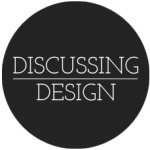Asking for feedback is a universal part of the design process regardless of organization, industry or maturity. At some point in the process of making something you turn to others and either explicitly or implicitly open the doors to collecting their thoughts on what you’ve constructed. It could be that you’re doing this in meetings. It could be that you’re grabbing the person next to you after staring at your screen for two hours. Or it may be that you’re just posting what you’ve just created out into the world in some fashion.
In many organizations, teams use the words critique and feedback interchangeably. Truthfully, feedback is more commonly used, while in some orgs we’ve noticed that “critique” is unfortunately seen as just a more pretentious label for the same process.
But in our efforts to improve the ways we communicate as teammates and collaborators, it’s important to understand that there are differences between feedback and critique. More specifically, there are characteristics that separate critique as just one of 3 kinds of feedback, all of which vary in their level of usefulness to us in the design process. Understanding the three kinds of feedback is key to our ability to react and use feedback in improving our creations.
The First 2 Types of Feedback
Reaction
Example: Good lord! That’s awful! An inebriated cocker spaniel could have done better!
Reaction-based feedback tends to be emotional and/or visceral. It happens quickly, instinctively. Feedback of this type can often be the most passionate, as it’s driven by an individual’s own expectations, desires and values.
There is a second kind of reaction-based feedback that is driven by the individual’s understanding of what they are expected to say, typically driven by a cultural understanding or what they think the presenter wants to hear. In this case, the reaction itself isn’t in regard to what’s being presented, but rather to the situation of simply being asked for feedback in the first place.
Why it can be an issue: At best, this kind of feedback tells us about the subconscious reaction the viewer has to what you’ve created. But are they reflective of your design’s actual audience? Are they reacting to it as the intended audience? Does this reaction tell you anything specific about any of the design decisions you’ve made so far or their effectiveness?
Direction
Example: You should have made all of those radio buttons a drop down [because…]
Direction-based feedback typically begins with an instruction or suggestion. In many cases that’s also where it ends. In this form of feedback, the individual providing it is often looking for ways to bring the creation more in line with their own expectations of what the solution should be. It may be because they have their own detailed solution already in their mind, or it may be that they feel a problem they perceive is not adequately being solved. In some cases, the individual will go on to describe why they are making the suggestion, which can shed a bit more light on their thinking and motives.
Why it can be an issue: Similar to reaction-based feedback, direction-based feedback without any explanation tells you nothing about the effectiveness of your decisions in meeting the design’s objectives. Sure, if the person giving you feedback is the one who will ultimately approve the design, it might supply you with a to-do list that you could act upon to get their approval, but getting that approval and creating an effective design are not necessarily the same thing.
In the situations where the individual also gives some explanation as to why they are making the suggestion, you at least begin to understand the impetus and perhaps the issue they’re trying to address with it. But it still does little to help you understand the specifics around how or why the design you have is or is not effective at addressing that problem.
Additionally, when left unchecked, this type of feedback leads to problem solving which, while an important part of the design process, is counter-productive to critique. For more information on this, check out this post.
What we really need is critical thinking.
Critical thinking is the process of taking a statement and determining if it is true or false. When we’re designing something, we’re doing so to meet or achieve some set of objectives. When looking for feedback on our creations, what we should be working to understand is whether we think it’s true or not that what has been created, and the way in which it’s been created, adequately achieves those objectives. We’re looking for a type of analysis to take place.
And that’s exactly what critique is.
Critique, the third form of feedback.
Example: If the objective is for users to seriously consider the impact to their bank balance before making a purchase, placing the balance at the bottom of the screen at the same size as all the other numbers isn’t effective because it gets lost in all of the other information.
It’s this form of feedback that is most helpful to us in understanding the impact of our design decisions. Critique is a form of analysis that uses critical thinking to determine whether a creation is expected to achieve its desired outcomes. Those outcomes can be any number of things. They can be about utility, for example giving someone the ability to complete a task. They can be about metrics and measurement, as in increasing the number of conversions for a particular call to action. Or they can be experiential, such as making someone feel excited or surprised by something.
Once we understand how effective our design choices are in relation to their objectives, we can now iterate. We can explore potential ways to change aspects of the design and strengthen it, while increasing the likelihood of successfully reaching those objectives.

One Response to 3 Kinds of Feedback